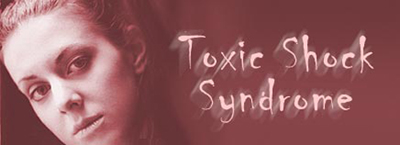October 23, 2006
Toxic Shock – It’s Baaack! 
By Michael D. Shaw
Women, take note. Toxic shock syndrome (TSS) is on the rise again, even though you likely have heard exaggerated reports that it had been conquered and summarily disappeared.
TSS captured headlines in the early 1980s when it was linked to tampon use. The condition is an acute-onset illness caused by our old “friend” Staphylococcus aureus—a bacterial scourge of humanity since day one. Fever, sunburn-like rash, and flu-like symptoms, including vomiting, diarrhea, and generalized aches and pains, are symptoms all menstruating women were told to watch out for during this time, when TSS was linked to the use of high-absorbency tampons.
Bear in mind that TSS is potentially lethal, although its incidence dropped in 1984, when the highest absorbency tampons were removed from the market, and women learned about preventive measures regarding TSS. The materials that exacerbated the problem—polyester, carboxymethylcellulose, and polyacrylate—are no longer used in the manufacture of feminine hygiene products.
And yet, TSS is back with a vengeance. A team of researchers at the Department of Microbiology of the University of Minnesota Medical School in Minneapolis, led by Patrick M. Schlievert, have uncovered a steady increase in TSS, after following cases in menstruating women, non-menstruating women, and men in the Twin Cities area from 2000-2003.
Consider these stark figures: In the early 1980s, the yearly incidence of TSS was 10 per 100,000 women of menstrual age. By the late 1980s, the incidence had dropped to 1 per 100,000 women. However, the numbers have been on the rise, with 1.6 per 100,000 in 2001; 2.4 per 100,000 in 2002; 3.4 per 100,000 in 2003; and 5 per 100,000 in 2004.
“If the current rate continues to increase, by the end of the year the incidence of toxic shock syndrome will be approximately where it was at its peak in 1980-81,” stated Schlievert. “Although this study was done in the Twin Cities, this is a phenomenon across the United States,” he warned.
It is important to note that TSS is not confined to menstrual females; it also affects young girls and males of all ages. For example, chicken pox is the most serious risk factor for a strep bacterial infection leading to TSS in children. Scratching chicken pox blisters can lead to a group A streptococcal skin infection, increasing a child’s risk of developing TSS.
For adults, the risk for staph nonmenstrual TSS is increased by skin injury, including surgical wounds; abscesses; use of contraceptive sponges; recent respiratory infections, such as sinusitis, sore throat, tonsillitis, or pneumonia; and a history of staph menstrual TSS.
Diagnosing TSS is, perhaps, just as important as treating it. Ruling out similar illnesses such as Rocky Mountain Spotted Fever, among others, is essential in correctly identifying TSS. Other diagnostic procedures may include blood cultures, tests to measure blood clotting and bleeding times, and urinalysis. Treatment will also vary, and can involve intravenous fluids, blood pressure support, and dialysis if severe kidney dysfunction is present. Antibiotic therapy is also used and in some cases, intravenous immunoglobulin may be required.
Suggestions for preventing TSS include:
- Non use of tampons by women who have previously had TSS, as re-infection is common
- Meticulous wound care
- Minimal usage of vaginal foreign body items such as diaphragms, tampons, and sponges by all women
- Admonishing chicken pox patients not to scratch their lesions
Yes, TSS is still very much with us. Its virulence demands new action and greater public awareness. Women have a vested interest in this campaign, and all people—young and old—have some susceptibility to this condition, as well. Only by recognizing the seriousness of this issue will we be able to defeat it.
We must make TSS DOA.

